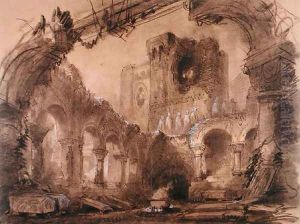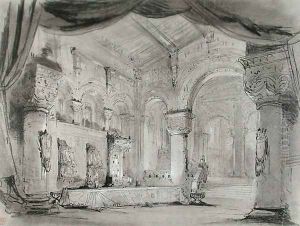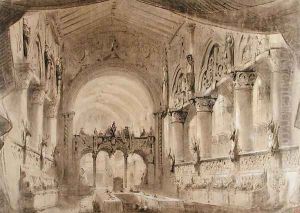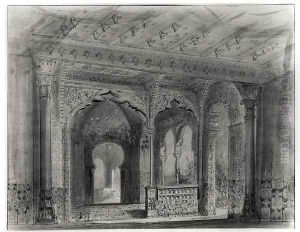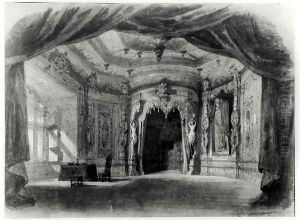Charles Antoine Cambon Paintings
Charles Antoine Cambon was a French scene painter and decorator known for his work in the theater during the 19th century. Born on June 11, 1802, in Paris, France, Cambon established himself as a prominent figure in the world of stage design and is especially remembered for his contributions to the aesthetic of French Romantic theater.
Cambon's career spanned several decades, during which he worked with some of the most renowned theaters in Paris, including the Opéra-Comique, the Théâtre de l'Académie Royale de Musique, and the Théâtre de l'Ambigu-Comique. He was part of a generation of artists who revolutionized stage design by integrating the visual arts, architecture, and technical innovation to create immersive theatrical environments. His designs often featured elaborate backdrops and set pieces that enhanced the dramatic effect of the plays and operas of his time.
Over the years, Cambon collaborated with various playwrights and composers, such as Giacomo Meyerbeer, for whom he designed the sets for the opera 'Les Huguenots'. His style was characterized by its attention to detail, historical accuracy, and the ability to convey mood and atmosphere. Cambon's legacy includes his influence on the visual presentation of theater and his role in the development of scene painting as a respected art form.
Despite his success, Charles Antoine Cambon's personal life remains somewhat obscure, as he was known to be a private individual. His artistic contributions, however, have been well-documented, and his work was highly appreciated by his contemporaries. Cambon's dedication to his craft earned him the title of Chevalier of the Legion of Honor in 1869, recognizing his significant contributions to French art and culture.
Charles Antoine Cambon passed away on March 28, 1875, in Paris. His death marked the end of an era for French scenic design, but his innovative approaches to stagecraft continued to inspire future generations of artists and designers. Today, Cambon is remembered as a pioneer in his field, whose artistic vision helped shape the visual language of theater.
